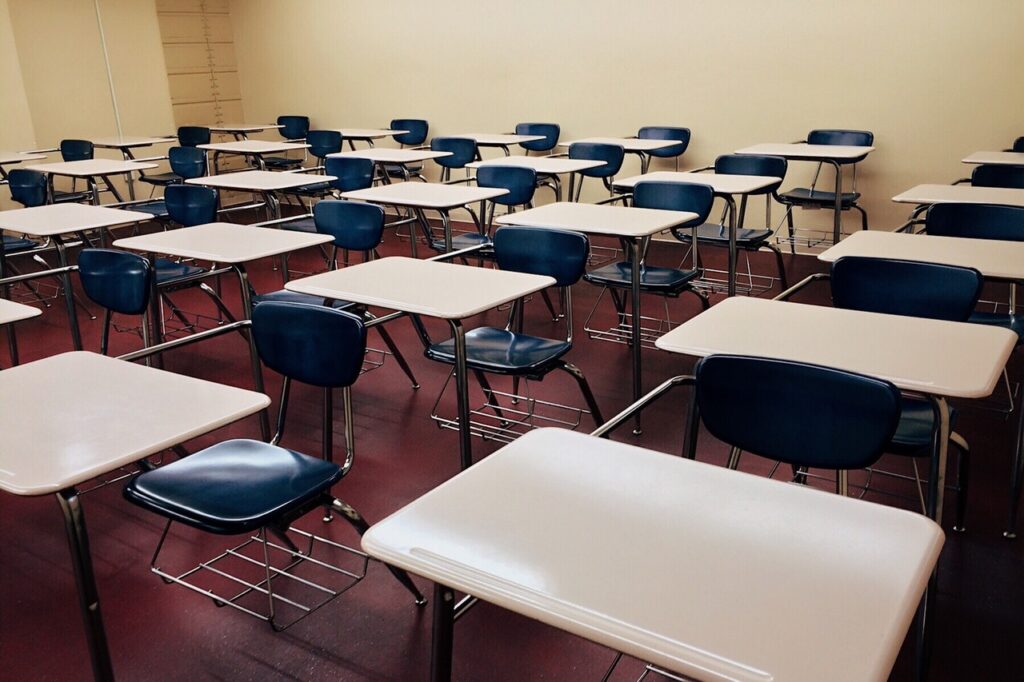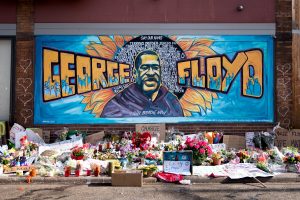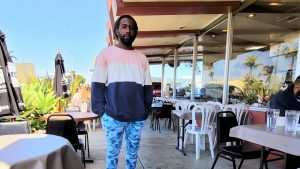On August 6, Chicago Public Schools (CPS) scrapped its Fall hybrid learning plan for an all remote plan. Lightfoot made the call a day after the Chicago Teachers Union (CTU) told CNN it would soon conduct a strike vote to oppose in-person learning. The Mayor, though, denied that the Union influenced the decision at all, citing science instead.
What is the Science of COVID-19 in Relation to Chicago?
“As we have now repeatedly said about every decision we’ve made in the context of this pandemic, we have to be guided by the science, period,” Lightfoot said.
For Lightfoot to imply her decisions have been reliant on science brings me pause, and not just because it seems obvious the decision was born of Union pressure and parental concerns.
I say this because, scientifically, there’s not much argument for sending large groups of humans, young humans who may struggle with keeping masks on and bodies distant, into enclosed spaces, to share breath with one another, their middle aged teachers, and to then bring it home to their mothers and grandpapas. Especially in a city with markedly rising cases among a backdrop of markedly diminishing safety efforts.
When the hybrid model was the plan, Illinois’ daily new case rate was around 1500. Since then, it has shot up to just under 2000, and 24 Illinois children have developed a severe, rare COVID-19 related syndrome.
“Kids can transmit the virus. They are susceptible to it, and the rates of hospitalization is going up.” said a UCLA epidemiology professor told CNN on August 5.
In Florida the number of children who have been hospitalized with Covid-19 surged 23% over eight days.
Or, there’s the Georgia sleepaway camp, where hundreds of attendees, age 6-10, contracted the virus. Some people argue that the camp isn’t a proper case to draw judgement from, since many of the kids went unmasked and failed to distance, but I have yet to enter a place with adults capable of wearing their masks over their nose holes and waiting two seconds for me to move, instead of squeezing like a book between me and a key chain display to grab tape.
Plus, those Georgia camp kids spent a lot of time outdoors, or with windows open. A recent study outlined in the Atlantic showed that the odds of catching the virus indoors are 19 times higher than outdoors.
I don’t actually understand why childrens’ COVID-19 immunity is the focus of the scientific debate, since children, in my experience, usually live with adults they could infect.
I should clarify that the in person plan was referred to as a “hybrid plan.” It consisted of only two in person days a week, a large justification being the need for childcare. But if childcare was a reason to hold in person classes, instead of being open for two days a week, the schools could simply offer daily childcare–two days a week isn’t very helpful for widely varying childcare needs. It seems being open two days a week may have been an excuse to ignore the disparities that make remote learning difficult to conduct. That somehow the two in person days would make up for all the people who’d struggle to access remote learning, so that leadership wouldn’t have to dole out more support to families. Hence, after remote learning became the new plan, Lightfoot unveiled her mostly privately funded internet access program (gesture).
Scientifically, there was never a case to open schools. That’s why an article about the complexities behind the decision making process–the initial plan to open for in person days, and the walk back to fully remote classes–got me thinking.
“Mayor Lori Lightfoot and school district leaders are catching heat for proposing a hybrid plan in the first place, rather than taking a return to classrooms off the table early and giving teachers and families the summer to prepare,” said writer Heidi Stevens. “But that criticism fails to consider the incredibly diverse and sometimes devastating needs of CPS’ more than 355,000 students. School is, for some kids, the safest part of their day. For some children, violence rages outside of their homes. For some children, it rages inside.”
Defining Appropriating Complexity
The thing that got me thinking was the use of complexity to forgive Lightfoot and CPS for trying to run a dangerous plan. The diverse needs that are said to have affected Lightfoot and district leaders’ decision process only work to justify the tough choices of individuals, individuals being those children Stevens mentions who have “devastating needs of CPS” and the parents who need childcare in order to work, rely on school lunches to feed their kids, and lack internet access for remote programs.
It is parents, students, and teachers who actually have to reckon with the complexity of their needs, and it’s leadership and policy makers, Lightfoot and CPS leaders, who create that complexity. Using individual needs that are caused by years of neglectful governmental choices in order to take the heat off new bad governmental choices is circular logic.
An analogy: Trump won’t enforce a national shutdown, which we really need in order to protect lives, but it’s complicated: People have to work, pay bills, and shop! Therefore, we can’t blast him too bad for not closing down.
But isn’t he (his party, his donors, his cabinet, whatever) largely responsible for the fact that we lack the stimulus and unemployment money, eviction protection, and universal utilities needed for each of us to stay home long term?
For an individual, the choice between, say, going to work and risking their lungs, or staying home and running through their miniscule savings, is truly complex. But that’s because it’s what they were given. Can we even call that a choice? A proper and fair weighing of pros and cons? And why can the people who made it complicated simply slurp these complexities up into their apology for not making the only scientifically safe choice?
On the subject of internet access, a largely cited complexity by Lightfoot, if she’d expand her currently narrow free high speed internet program that is budgeted to last four years, the remote learning access complexity would be solved; Parents wouldn’t have to weigh pros and cons against contracting a potentially fatal virus because they can’t afford WiFi. Potential fatality being inherent to only one end, it’s almost dystopian to have to consider that end because you can’t afford a utility.
It’s especially frustrating because utility companies can be bought out or leveraged with by governors which has proven beneficial for the first state to do so. WiFi can be municipally operated by city governments, which would be a longer term solution than Lightfoot’s privately funded four year program.
Likewise, if Chicago had democratized Comed by now (get involved here), maybe school wouldn’t be the most stable part of some childrens’ days.
If residents weren’t marginalized by race and class and deprived of TIF funds and funding for infrastructure based on their location, school wouldn’t be the safest part of some childrens’ days. Hell, maybe if we didn’t militarize the West and South of Chicago with cops, school wouldn’t be the safest part of childrens’ days.
“The decision [to go remote] affects more than 355,000 students and most severely hurts poor families and people of color. About 76% of students are economically disadvantaged, and among all students, 36% are African-American and 47% are Hispanic,” said Chicago Public Schools.
Still, in a CPS feedback survey, only 20% of Black and Latino families, which comprise the majority of CPS students, said they intended to send their children back to school. No matter how many wonderful resources may be waiting at the in-person classroom, it seems many parents would still choose home over potential exposure to a severely dangerous respiratory and blood infection. This isn’t to say that the CPS statement isn’t completely true. It just doesn’t make leadership look any better. It’s instead a testament to how large a threat COVID-19 is to the same families being used to justify in person learning.
A CNN article about disparities and complexities in remote learning used statements of concern from Goldman Sachs: “For students, learning from home may also have plenty of long-run effects, including lower-quality education, a lack of development in social skills and food insecurity for kids reliant on school lunches. All of that can translate into worsening income and educational inequality later in life.”
Low quality education is already a Chicago crisis, remote or not. And food insecurity may be better attended to with a fat bump in SNAP benefits, but I guess gathering children into rooms with a contagious pathogen is one way to help hungry people. Or, rather, to slap another temporary band aid on it for the day.
Individuals Bear the Weight of Complexity
It is true that, all of this being said, individuals still have to make decisions within the context of COVID-19 normalization and being forced to work per lack of funds. At a point, it becomes unhelpful for me to say, “Well the Feds just need to give us money! Lightfoot just needs to democratize utilities and the internet!” It doesn’t change the reality.
It’s also unhelpful to strip leadership shortfalls and a realistic evaluation of health risks from the conversation. Instead, discussions of disparities that make remote learning a complex endeavor should bring more heat to the Chicago government and CPS.
There’s responsibility to be taken here, and the disparities among class and race that make it difficult for CPS and Lightfoot to facilitate remote learning should not be so easily reconciled with a “Well lots of poor people have no internet, so we gotta send them into rooms together during a worsening pandemic”; Especially since the COVID-19 risk is higher for the same households that make it so “tricky” for CPS to close:
A study published in the journal Pediatrics examined 1,000 patients tested at a Children’s National Covid-19 testing site. While 30% of Black children and 46.4% of Hispanic children tested positive, only 7.3% of White children did. Plus, they found that three times as many Black children reported exposure to COVID-19 as white children did.
Georgia teacher Amy Forehand told Nash FM:
“I have a lot of fears. The community spread is still very high. I have asthma. My 2-year-old son is showing indications he as well has asthma,” she said. “Right now, I am actually afraid for my life, and I’m not going to be able to teach any children if I am having to take extended medical leave, or if I die.”
This is what “complicated” looks like for many teachers, students, and families. Another article on leadership’s decision process said, “Schools are trying to provide options and answers for families with a million different needs, against a public health backdrop that shifts by the day. Which leaves families to choose from a collection of unsatisfactory options, all of which carry tremendous, unknowable risk.”
The answer to “a million different needs,” in this case, is actually kind of simple–kind of “life or death”: Provide people with the resources they need to make remote learning work for their children, since lives are at stake, and in person learning is the thing putting lives at stake. Make the remote option satisfactory. There’s loads of writing and statements from over the past month on why remote learning won’t work for so many people, so there’s no shortage of record as to what, specifically, needs to be resolved.
The “unknowable risks” of each choice are fully knowable. They are tremendous for in-person learning because COVID is dangerous and contagious. They’re tremendous for remote learning because of the City’s failure to provide citizens with a standard of living that doesn’t require them to harness a barely working signal from their neighbor’s WiFi in order to watch a video, or that allows for school to be the only place a child can get food. However, one of these options is actually manageable, and one of them is more of a man vs nature situation that we can only manage by staying home.
Teachers, kids, and anyone who demographically fits the financial and social complexities Stevens, CNN, CPS, Goldman Sachs, and Lightfoot cite in these discussions are probably working with a lot of weight. Yet, somehow, they’re the ones used to take the heat off of Lightfoot’s initial plan to reopen twice weekly, with a poor remote plan, against safety and science.
And, somehow, food and housing security, neighborhood infrastructure, internet access, child care, pandemic working conditions, and even future income disparities, continue to be discussed as entities separate from their fundamental causes and potential solutions, and instead as liberal talking points to ease weight from leadership’s shoulders.










Be First to Comment